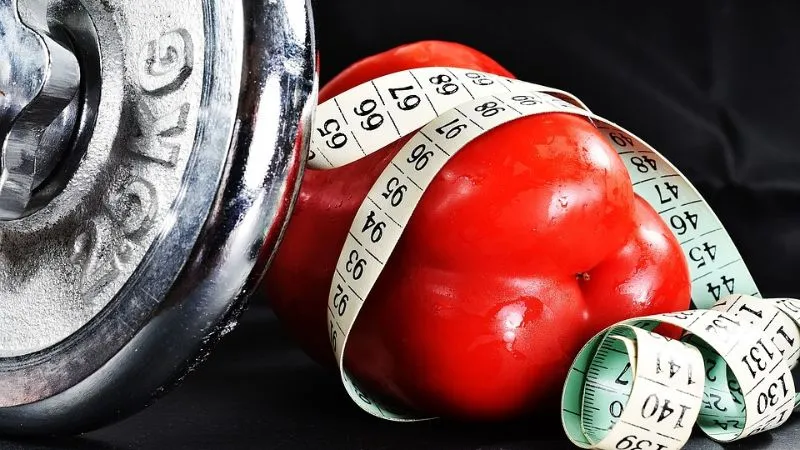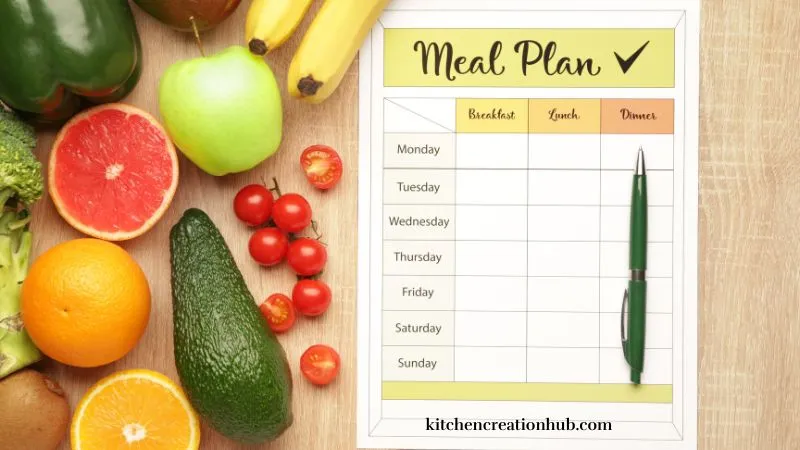Losing weight can frequently be overwhelming, especially whilst lifestyles are busy. This is when meal prep steps in as a sport changer. By getting ready food in advance, you’re saving time and making it less complicated to paste to your nutritional desires. Studies show that folks who plan their meals consume less energy and make healthier meal choices than those who don’t.

Let’s dive into the practicalities of meal prep for weight loss or reduction, slowly breaking it down and exploring how it may be healthy in your way of life.
Step 1: Set Clear Goals

Before you start prepping food, defining your weight loss dreams is critical. Are you aiming to lose a particular quantity of pounds? Are you focused on reducing unhealthy fats, carbs, or added sugars?
A 2017 study in the International Journal of Behavioral Nutrition and Physical Activity showed that folks who set unique desires were likely to stick to their meal plans and gain remarkable weight loss. Make positive your goals are SMART:
- Specific: Know exactly what you want to achieve (e.g., lose 10 pounds in three months).
- Measurable: Track your progress with metrics.
- Achievable: Set realistic expectations.
- Relevant: Focus on goals that matter to your health.
- Time-bound: Create deadlines to stay motivated.
Step 2: Plan Your Meals

Meal prepping starts with a solid plan. Here’s how you can do it effectively:
Choose Recipes That Align with Your Goals
Select meals that are calorie-controlled, nutrient-dense, and easy to prepare. For instance:
- Breakfast: late night oats with chia seeds and berries.
- Lunch: Grilled chicken salad with olive oil dressing.
- Dinner: Bake salmon with steamed vegetables and quinoa.
- Snacks: Pre-portioned nuts or Greek yogurt.
Count Your Macros
Understanding macronutrients—carbohydrates, proteins, and fats—is crucial. A common macronutrient split for weight loss is 40% carbs, 30% protein, and 30% fats. Tools like MyFitnessPal or Cronometer can help you calculated your daily needs based on your activity level and goals of your life.
Create a Grocery List
Once your menu is set, jot down all the necessary ingredients. Organize your list by sections (produce, dairy, proteins) to make shopping efficient.
Step 3: Invest in the Right Tools

Efficient meal prep calls for the right gadget. Here are a few need-to-haves:
- Meal Prep Containers
- BPA-loose, reusable bins which are microwave- and dishwasher-secure.
- Opt for compartmentalized containers to keep meals separate.
- Kitchen Tools
- A good set of knives, reducing forums, and measuring cups.
- Appliances like a sluggish cooker, air fryer, or on-the-spot pot can store time.
- Food Scale
- It is useful for element manipulation and monitoring calorie intake as it should be.
Step 4: Prep Your Meals

Now comes the motion part—cooking and assembling your meals. Dedicate a few hours every week (e.g., Sunday afternoons) to prepare meals for the times in advance.
Batch Cooking
Cook larger quantities of versatile components with grilled fowl, roasted greens, or quinoa. Store them in separate bins so you can blend and fit food for the week.
Read more : Chicken and Rice Meal Prep
Portion Control
Use a meal scale to measure precise quantities. For instance:
- Protein: three oz. (length of a deck of cards)
- Carbohydrates: ½ cup cooked rice or pasta
- Vegetables: 1 cup
Label Everything
Write down the meal call and date on each container. This guarantees freshness and stops meal waste.
Step 5 Stay Consistent and Flexible

Consistency is fundamental, but flexibility is equally essential. Life occurs, and also you may not usually stick with the plan. Here’s how to control it:
- Have Backup Meals: Keep healthy frozen meals or snacks available for emergencies.
- Rotate Recipes: To avoid boredom, transfer your menu every two weeks.
- Track Progress: Regularly test your weight, strength stages, and standard fitness to see how meal prep is running for you.
Real-Life Case Study: Sarah’s Success Story
Sarah, a 34-year-old vintage instructor, struggled with her weight for years due to a busy agenda and reliance on fast food. After attending a vitamin seminar, she determined to attempt meal prepping.
The Approach
- Initial Setup: Sarah invested in portioned containers and downloaded a meal-planning app.
- Meal Prep Routine: She committed Sunday mornings to preparing meals for the week that specialize in lean proteins, complete grains, and greens.
Common Pitfalls and How to Avoid Them
Overcomplicating Recipes
Stick to simple meals with minimal ingredients to save time and reduce decision fatigue.
Ignoring Portion Sizes
Even healthy foods can lead to weight gains if portions are too large. Measure everything until you get a good sense of appropriate serving sizes.
Lack of Variety
Eating the same meals repeatedly can lead to boredom. Rotate different proteins, grains, and vegetables to keep things interesting.
Skipping Meal Prep Days
You will likely rely on unhealthy options if you miss your meal prep day. Please plan and make it a non-negotiable part of your routine.
Benefits of Meal Prep Beyond Weight Loss
- Saves Time: Prepping in bulk reduces everyday cooking time.
- Reduces Food Waste: Planning helps you buy only what you want.
- Improves Portion Control: Pre-measured food prevents overeating.
- Cost-Effective: Home-cooked food is commonly cheaper than ingesting out.
- Builds Healthy Habits: Meal prepping encourages conscious consuming and better dietary alternatives.
Final Thoughts
Meal prepping is more than only a fashion; it’s a practical approach for weight reduction at the same time as simplifying your daily habit. By planning, investing inside the proper equipment, and staying regular, you’re setting yourself up for long-time period achievement.
Remember, the goal isn’t perfection but progress. Start with small steps, analyze as you move, and rejoice every milestone. With meal prep, you’re not just dropping weight—you’re gaining control over your health and lifestyle.
FAQs
Q: How long can prepared food last inside the refrigerator?
A: Most food leaves fresh for up to four days when stored in airtight boxes. Freeze meals in case you need them to last longer.
Q: What if I don’t have time to prepare meals?
A: Start small. Prep simply one meal in step with day or consciousness on cutting ingredients earlier to shop cooking time later.
Q: Can meal prep work for families?
A: Absolutely! Involve a circle of relatives members inside the process and customize quantities based totally on personal desires.
Q: Do I want to count energy?
A: While no longer obligatory, calorie counting permits you to stay on track, particularly if weight reduction is your purpose.
